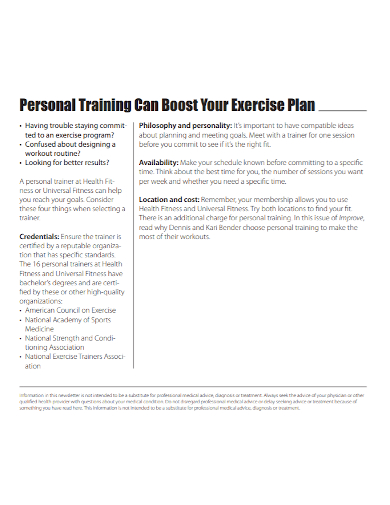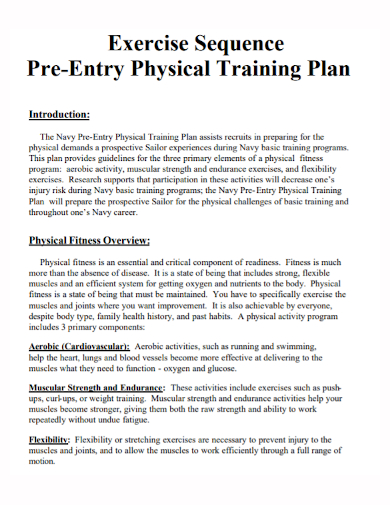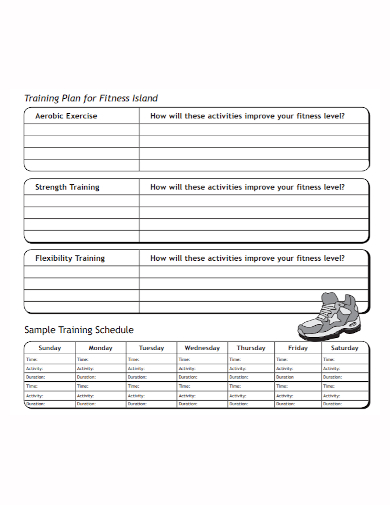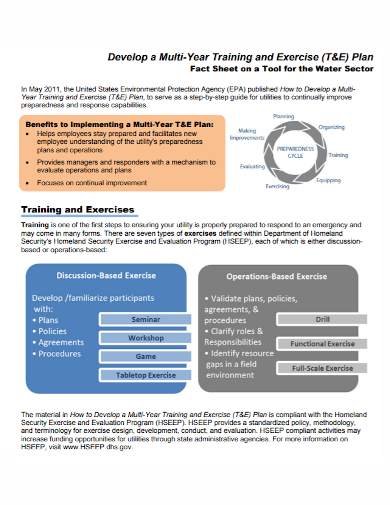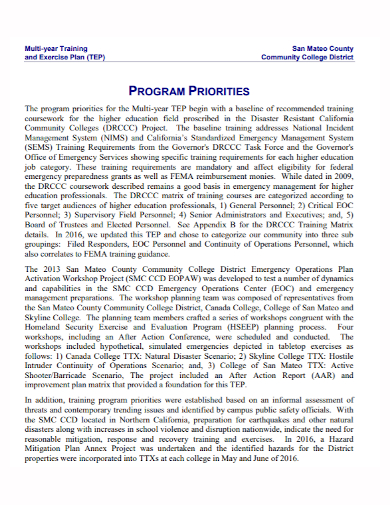So it’s the new year and one of your resolutions is to get fit or have a healthy weight. One way to do that is to do incorporate exercise in your daily life. But if your daily life does not have any exercises involved, it’s time to change your habits and routine and insert exercise training in to your daily activities. After all, it’s the only way (aside from changing your diet) to get to achieve a weight you want to have. In order to do that, you need to create a training plan to guide you on how to plot out the appropriate exercises suited for your body, your goals, and your schedule. Read the article to know how to make an exercise training plan.
5+ Exercise Training Plan Samples
1. Exercise Training Plan Template
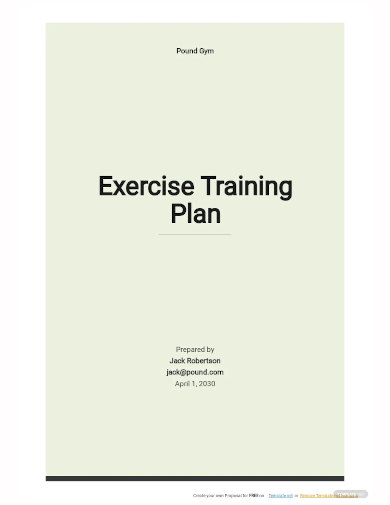
2. Personal Training Exercise Plan
3. Physical Exercise Training Plan
4. Fitness Exercise Training Plan
5. Exercise Multi-Year Training Plan
6. Exercise Training Program Plan
Importance of Exercise
People may moan and groan about doing exercises but what they don’t realize that exercise gives a lot of benefits to a person’s body. It helps people lose and maintain a healthy weight and lowers the risk of diseases such as obesity, diabetes, and high blood pressure. It also helps a person age well.
How to Make an Exercise Training Plan
1. Know Your Fitness Level
2. Create Your Fitness Program
Now is the time to create your fitness program. The program includes the exercises you will be doing every day. The first thing you need to do is to consider your fitness goals: Do you want to lose weight? Do you want to improve your flexibility? Knowing what your goals are will help you find out your progress and help you stay motivated.
Once you’ve figured out your goals, the next thing to do is create a balanced routine of aerobic, strength training, flexibility fitness activities. 150 minutes of aerobics exercises a week and strength training exercises twice a week is a great start for your training routine and you can see improvements in your health. It’s best to start cautiously and progress slowly to get your body get used to the new physical routine you’re setting up your body to.
If you’re getting used to your routine you can add different activities just to keep yourself interested on continuing your training exercises. You can do other fun activities such as biking, swimming, or hiking as part of your training. Make sure you balance the low intensity and high intensity in your training. But never forget to also devote time for recovery to help your body adjust from the strenous activities you’ve put it through and to also avoid injuries from happening.
3. Prepare Your Equipment
To keep yourself from getting injured, you need to proper equipment to aid with your exercise training. Get some athletic shoes and outfit suited to your types of exercises you’re going to do. If you’re investing to the proper equipment, make sure they’re practical and enjoyable to use. To help you keep track of your progress, you can use fitness apps from your smartphone devices and other tracking devices such as heart rate monitor or calories burned tracker.
4. Start Your Training
So now you’re plan is ready along with the exercise equipment and gear, it’s time to get started. Keep in mind that you don’t need to do a lot if you’re starting out. Start slow and build yourself up gradually. You need to make your body get used to the new physical activities you’re doing before you plunge on to do heavy physical activities. You can break up your exercise in different times of the day if you’re busy. As long as you’re doing any activities, it’s fine. If you’re feeling pain, shortness of breath, dizziness, or nausea, take a break, and hydrate yourself. Don’t push yourself too hard. If you’re not feeling too good with the activities you’ve set for yourself, you can always change it according to your capabilities.
FAQs
What are the different types of fitness exercises?
There are a lot of different types of fitness exercises that focus on one improvement area of the body that is beneficial for an overall efficient bodily function. These are:
- Aerobic exercises: Also called cardio exercises, these exercises are done to burn calories and reduce fat and they also boost the heart rate and breathing to allow more oxygen to reach the muscles. Examples of aerobic exercises are walking, biking, running, swimming, jogging, etc.
-
Strength training: Also called resistance training, these exercises are done to build muscle mass. Equipment such as weight machines, free weights, or resistance bands is used in these exercises.
-
Balance exercises: These types of exercises help maintain the balance of a person especially when they do activities involving the lower part of the body such as standing and walking. Having a good balance lessens the risks of injuries.
-
Flexibility exercises: Flexibility exercises such as stretching and yoga can help prevent the shortening and tightening of muscles that make a person more susceptible to muscle pains and balance problems.
How long should a person workout a day?
Generally speaking, a person should aim for at least 30 minutes of moderate physical activity every day. If a person is actively wanting to meet a specific fitness goal, they may need to exercise more.
Should you eat before or after a workout?
There’s no harm in eating before or after a workout but most experts highly recommend eating after a workout so to help your body recover from the nutrients lost while doing exercises.
Don’t forget to track your progress by assessing your fitness six weeks after you’ve start your training. Update your plan according to the results of your progress. If you lose motivation to continue your plan, try to set new goals or try a new activity. Remember that your exercise training plan is essential for you to establish a healthy habit for yourself. To help you get started making the training plan, download our free sample templates above to use as your guide!
Related Posts
FREE 7+ Fashion Business Plan Samples in PDF
FREE 10+ Sprint Planning Samples In MS Word | Google Docs | PDF
FREE 10+ Wedding Planning Samples in MS Word | Apple Pages | Powerpoint | PDF
FREE 9+ Monthly Study Planner Samples in PSD | Illustrator | InDesign | PDF
FREE 9+ Sample Curriculum Planning Templates in PDF | MS Word
FREE 10+ Teacher Development Plan Samples in MS Word | Google Docs | Apple Pages | PDF
FREE 10+ Basketball Practice Plan Samples in PDF
FREE 12+ School Business Plan Samples in PDF | MS Word | Apple Pages | Google Docs
FREE 7+ Client Strategic Plan Samples in PDF | MS Word
FREE 11+ Trucking Business Plan Templates in PDF | MS Word | Google Docs | Pages
FREE 7+ Small Hotel Business Plan Samples PDF | MS Word | Apple Pages | Google Docs
FREE 14+ Bakery Business Plans in MS Word | PDF | Google Docs | Pages
FREE 4+ Yearly Lesson Plan Samples in PDF
FREE 50+ Strategic Planning Samples in Google Docs | Pages | PDF | MS Word
FREE 10+ Construction Project Plan Samples in MS Word | Google Docs | Apple Pages | PDF

